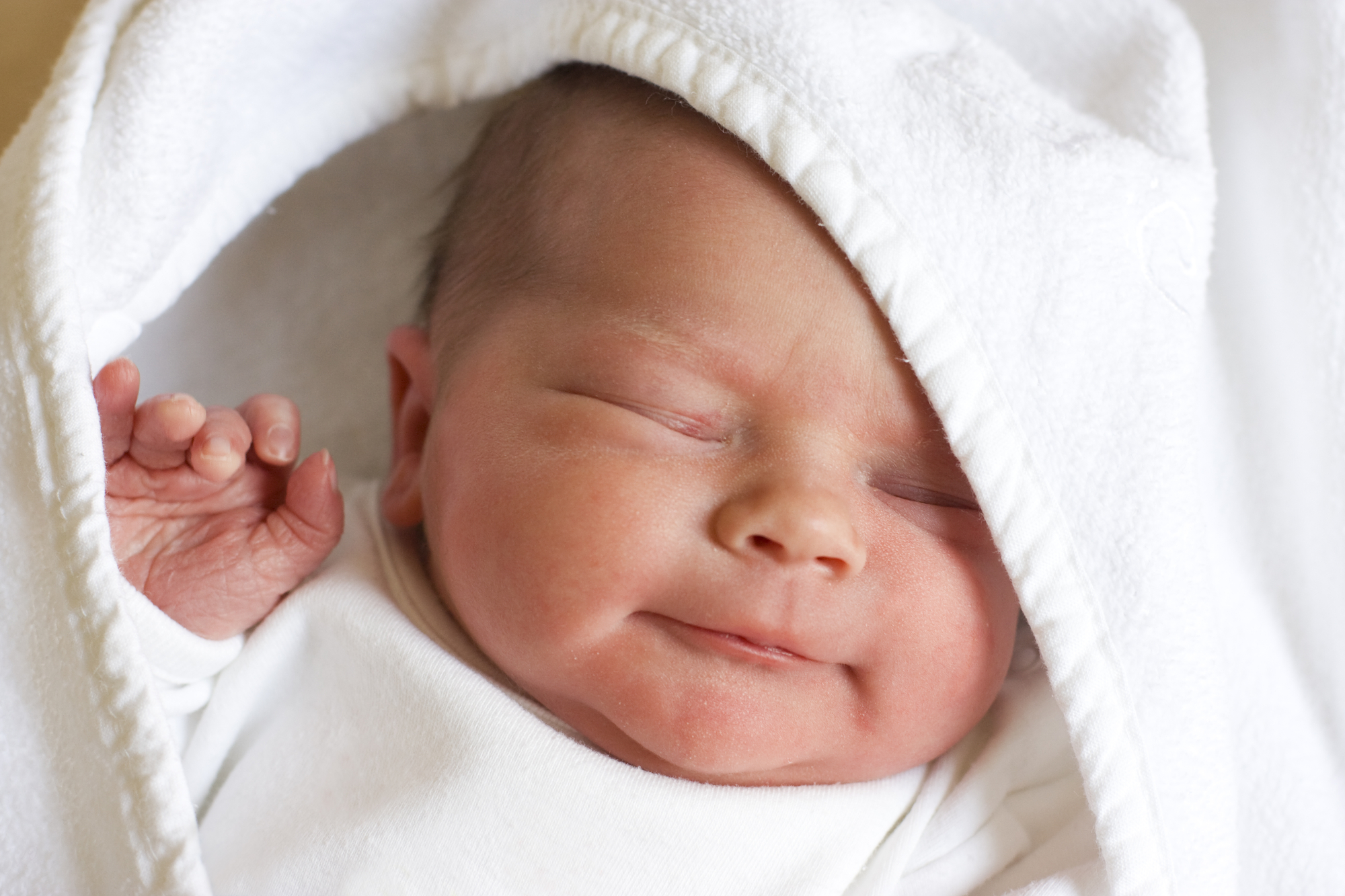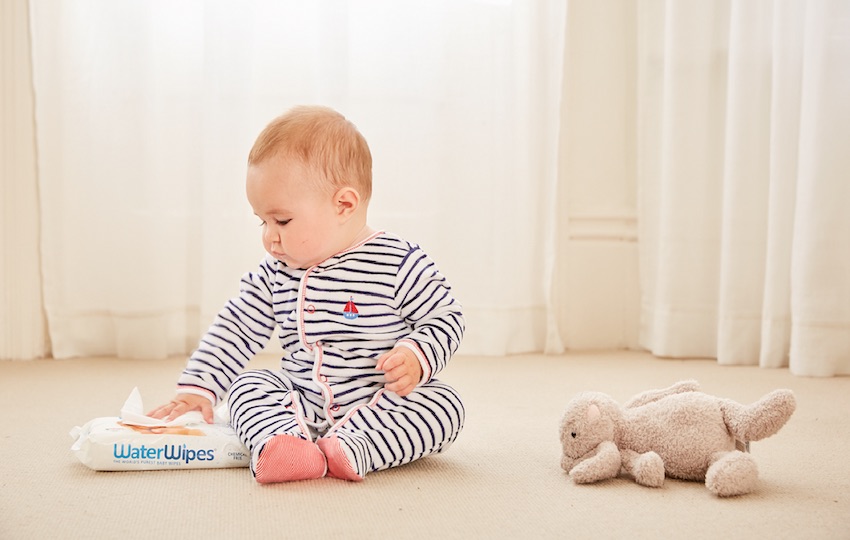Having a newborn baby is such an exciting time for many new parents, but it also may be one of the most challenging, particularly for first-time parents.
I have put together some information about a few common newborn conditions that I often see as a paediatrician (specialist children’s doctor).
THE HEAD
Head shape
- Many babies have slightly uneven or unusually shaped heads
- Babies have soft bones that move to fit through the birth canal during delivery, and they often come out with an elongated or odd head shape
- By six weeks, your baby’s head shape should remould to a more normal, more symmetrical shape
- If a funny head shape doesn’t resolve, it is worth getting checked by a health professional to check that the skull bones are growing normally
Head lumps
- Babies may also develop a bruise or lump on the outside of their skull after birth due to bleeding between the scalp and the skull (Cephalhaematoma)
- This is more common after forceps or suction deliveries
- These lumps do not cause pain and are not dangerous. The brain is not affected
- They usually resolve without any treatment within a few weeks or months but may become harder as the blood calcifies before shrinking and disappearing
Cradle Cap
- Cradle cap affects the scalp and sometimes eyebrows of newborns and infants
- The skin can appear yellow or red and scaly and can have crusts
- It is not itchy and usually clears on its own within a few months
- If you do decide to treat, you can remove the waxy crust by massaging your baby’s scalp with light moisturising cream, vaseline or baby oil and you can leave it in overnight. Then, when the crust is soft, gently remove the crust with a soft brush –> DON’T force the crust off as this can make the skin on the head bleed
- If the scalp is very itchy, inflamed or weepy, take your baby to your GP as they vary occasionally need topical steroids and anti yeast cream
THE EYES
Sticky, discharging eyes
- Babies can develop sticky eyes in either one or both eyes. This is usually due to a blocked tear duct and improves with time.
- Gentle eye cleansing with cotton wool, saline (salt water), and gentle tear duct massage can help.
- Blocked tear ducts don’t usually need antibiotics, but please see your doctor if there is redness around the eye or eyelids or if your child is unwell.
Yellow eyes or body (jaundice)
- Jaundice, or yellowness of the skin or white of the eyes, is common in newborns. It is due to a build-up of bilirubin, a product of broken-down blood
- “Normal” jaundice usually starts on day 2-3 of life, peaks on day 5-6 and resolves over a couple of weeks without treatment (physiological jaundice)
- When should you seek help: If your baby has jaundice that appears in the first 24 hours after birth, lasts > 2 weeks or is associated with pale poos and dark wee, your baby should be checked by a Dr and have blood tests
- If your baby is unwell, becoming increasingly yellow or feeding poorly, it is also important to get checked
- Most babies will not need treatment for their jaundice, but if your baby does, the treatment is usually light therapy (phototherapy) and is easy and safe
THE SKIN
Nappy Rash
- Nappy rash is common- you will notice redness or inflammation in the nappy area
- This happens from urine or poo contacting the skin
- You can help by:
– leaving your baby without a nappy for short periods
– changing wet or dirty nappies as soon as you can so they don’t irritate the skin for too long
– soaking your baby’s bottom in a warm bath and drying the area thoroughly
– putting on barrier cream or nappy rash cream – often zinc based cream- when you change your babies’ nappies
THE BELLY BUTTON- Umbilical cord
- Your baby’s umbilical cord will gradually dry, become black and then fall off, usually within the first ten days. To avoid infection in and around the umbilical cord, it is important to keep it clean and dry
- If it looks red and sticky, wash it with saline/water and see your GP
THE HIPS- Newborn hip conditions
- If your baby was breech, there is a family history of developmental hip disorders, or a nurse or doctor feels a “clunk or click” when examining your baby’s hips, a hip ultrasound may be ordered- this is to look for Developmental dysplasia of the hip (DDH).
- Most babies do not require treatment, but some do require a hip brace or other treatments.
- Wrapping your baby safely, with the legs free to move, is important in preventing hip problems. For more information, you can view the Royal Children’s Hospital Fact Sheet
NEWBORN POO- Unusual bowel movements
- Your baby’s first poo should be a dark green/black tar-like substance called meconium. This is usually passed within 48 hours of birth.
- After that, your baby’s poo will often become dark green for a few days, and then its colour may vary enormously- ranging from yellow, orange, and mustard to green.
- The consistency will also vary- from runny to firm and everything in between.
- Some babies poo all the time, and others who are breastfed may only poo once every week or even two weeks.
- There is a huge variation in the colour and consistency of baby poo.
- If your baby has very pale poo or blood in the poo, diarrhea-causing dehydration or constipation, please see a health professional.
WEIGHT LOSS-after birth
- It is normal for your baby to lose weight during the first five days after birth
- This weight loss should not be more than 10% of your baby’s birth weight
- Most babies regain birth weight after 1-2 weeks
- If your baby has lost too much weight, please get them checked.
In Australia, most babies will not need to be seen by a paediatrician (specialist children’s doctor) as we have a great system with Maternal Child Health Nurses and GPs managing most childhood issues. If there are concerns, your MCHN or GP will refer you to a paediatrician or hospital.
It can be very helpful to have a GP who gets to know your baby and family well and travels on your journey with you. It’s worth asking your friends or family to recommend a GP who is experienced and comfortable seeing babies and children if you do not already have one.
Your baby’s 6-week check is important so please make sure you get this done.
When to see your GP or take your newborn to hospital
If something doesn’t seem right and you are worried about your newborn, please get your baby checked – newborn babies can get sick quickly so it is better to get them checked and be reassured by a health professional than stay up all night worrying. Some common reasons to take your baby to the GP or hospital are:
- fever
- rashes
- poor feeding
- poor weight gain
- sleepy babies
- unsettled or irritable babies
- vomiting
- diarrhoea
- constipation
In this article, I have only been able to discuss a few of the common newborn issues- it is helpful for new parents to know where to find up-to-date, accurate health information about babies- here are some great resources that you can access anytime:
Royal Children’s Hospital Kids Info
The Women’s Org – At home with your baby
Dr Lexi Frydenberg
General Paediatrician
Instagram:@drlexifry
Website: drlexi.com.au








